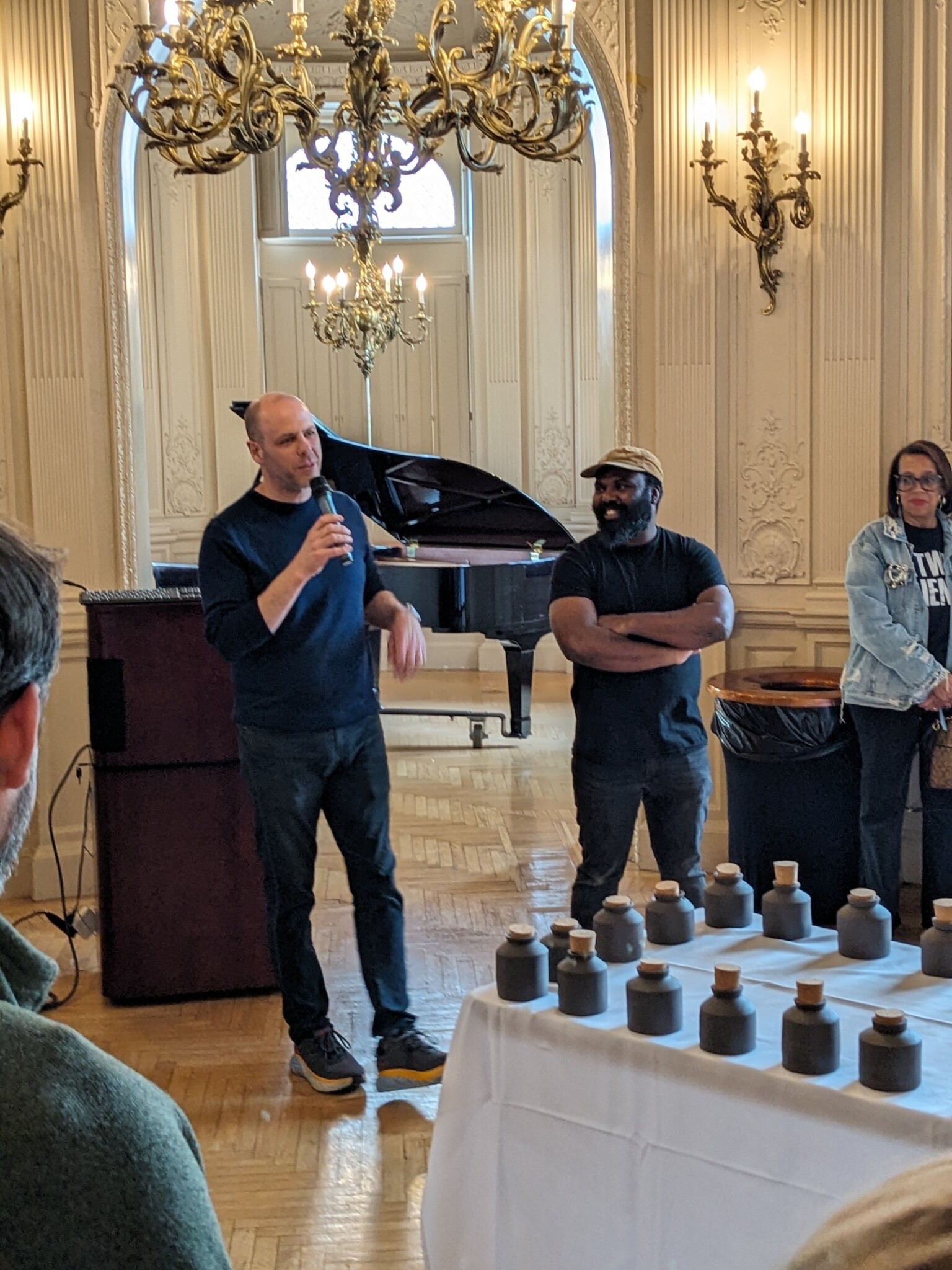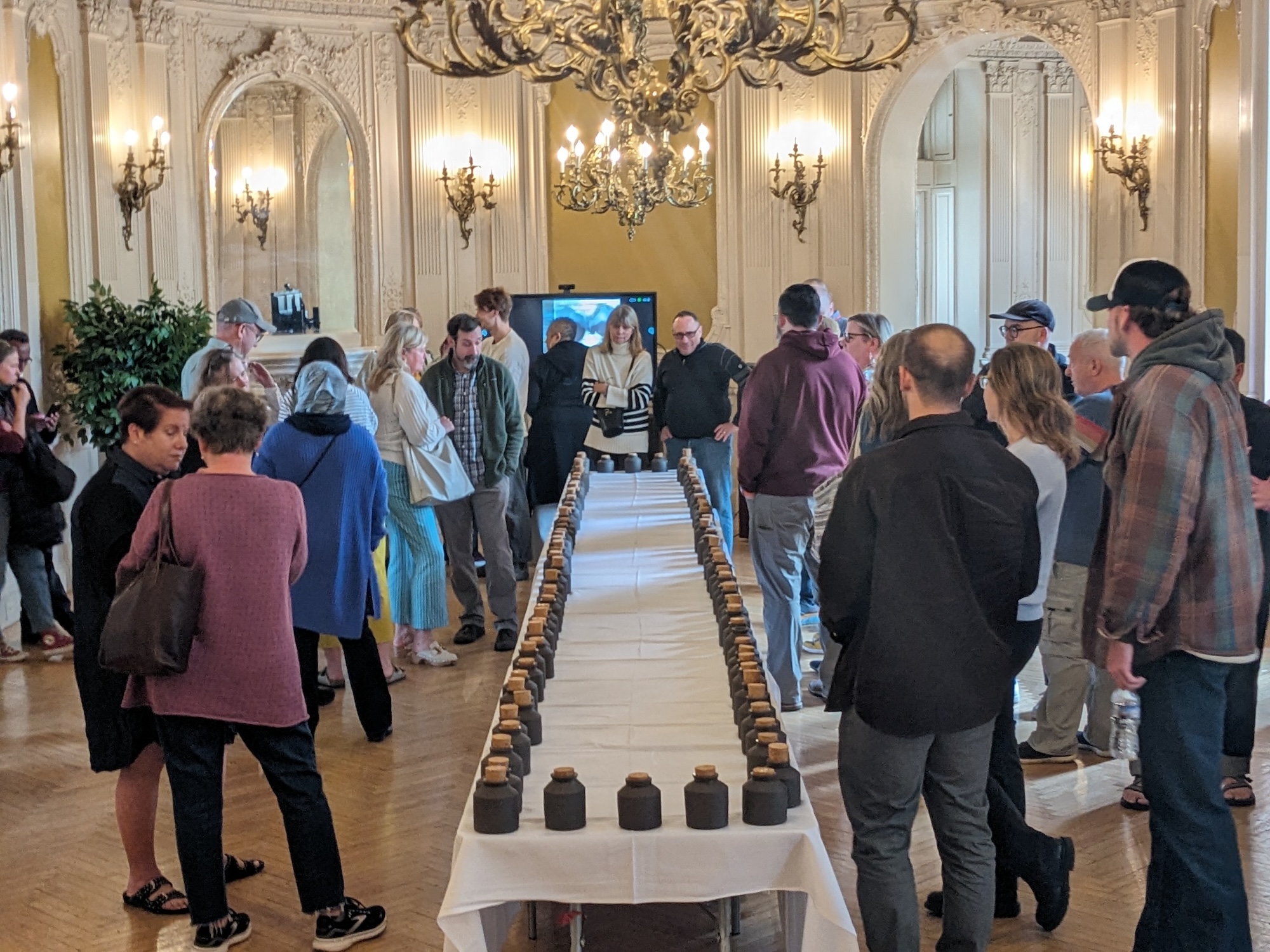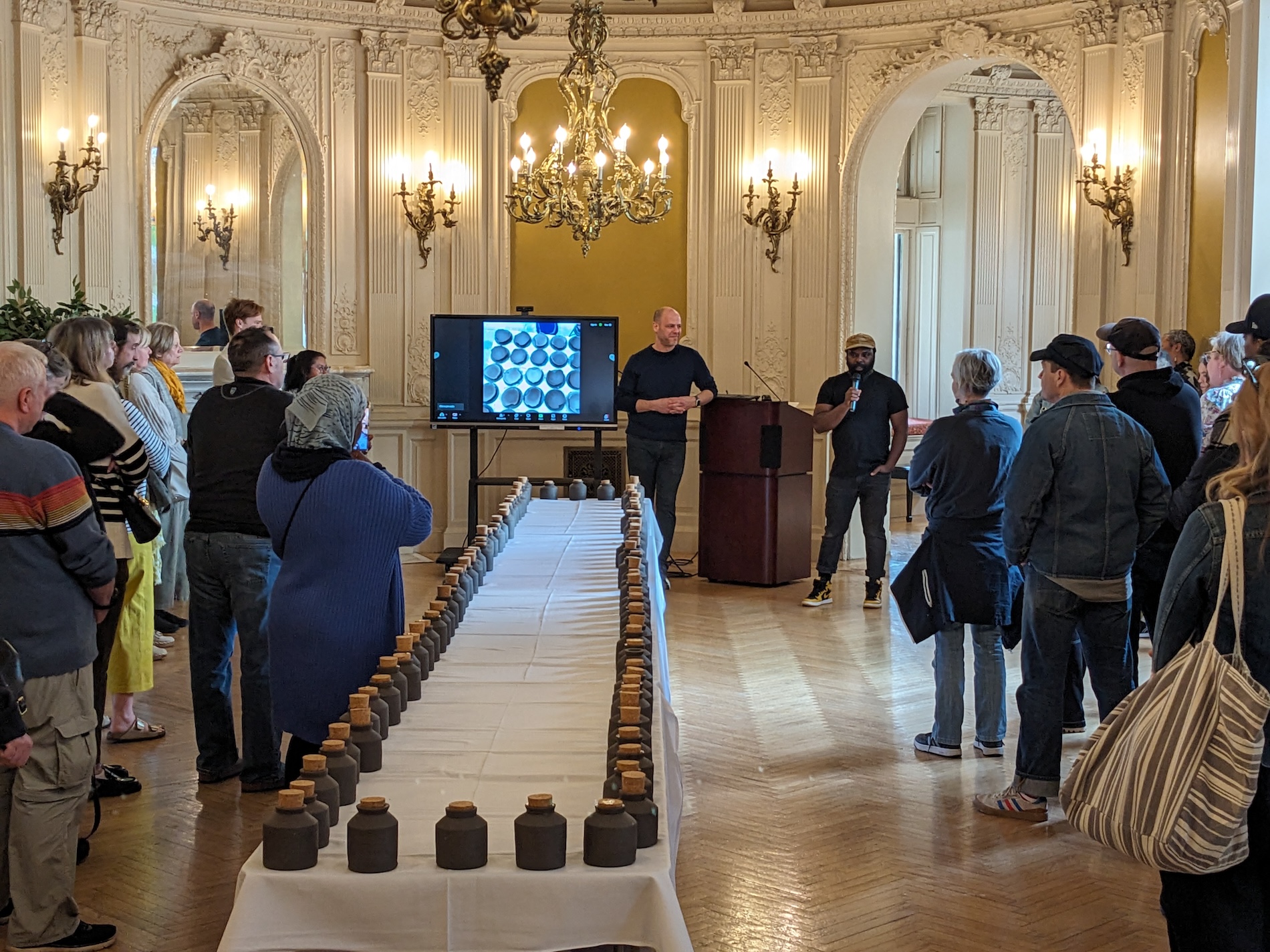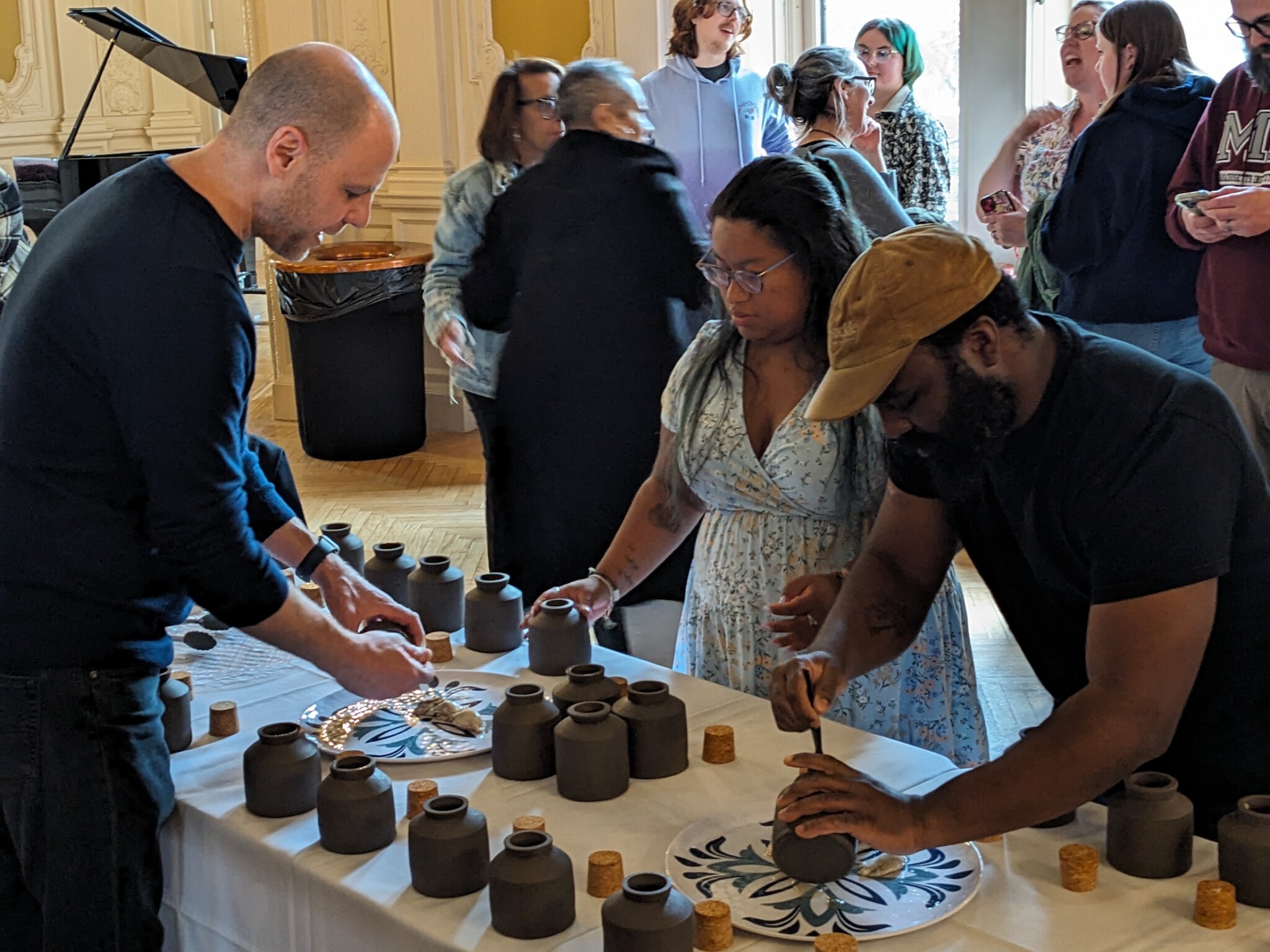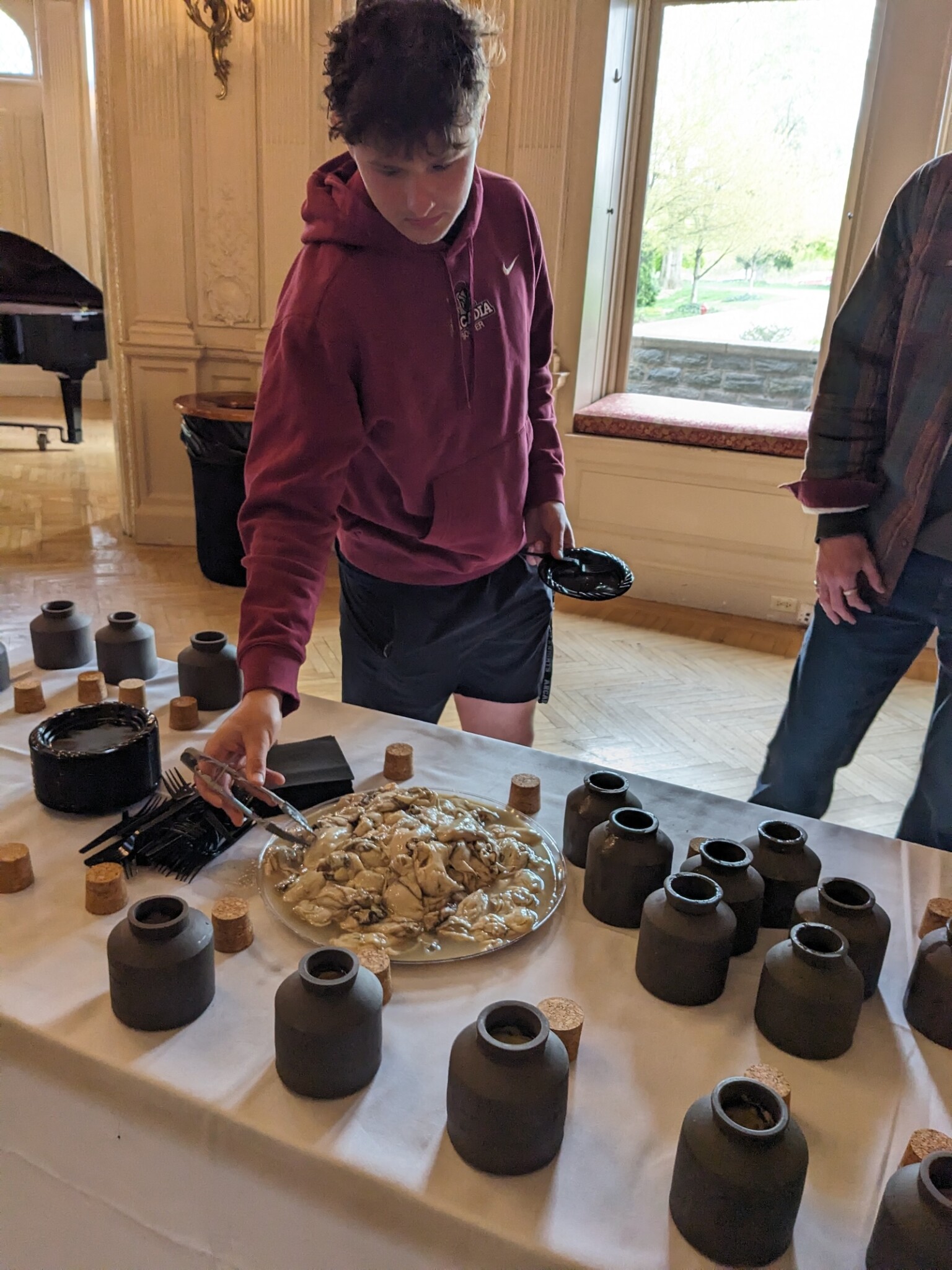Community Samples CASAA Microgrant Recipients’ Work at Pickled Oyster Tasting
An edible art exhibit of sorts took over the Grey Towers Castle Rose Room on April 21. To show off their work titled ˈȯi-stər · ve-səl produced for an upcoming exhibition at Winterthur, Professor Gregg Moore and Chef Omar Tate led a presentation and complementary pickled oyster tasting.
Moore, director of Arcadia’s Ceramics program, and Tate received a Winterthur Maker-Creator Research Fellowship in 2022 during which they have been studying the relationship between ceramics made by enslaved African Americans and that of abolitionists in the 18th and 19th centuries. This research led them to focus on potter Thomas Commeraw and oyster man Thomas Downing. For this work, they also received a 2023-24 microgrant from the Center for Antiracist Scholarship, Advocacy, and Action (CASAA), which co-sponsored Sunday’s event along with the Department of Visual and Performing Arts.
A collaborative installation by Tate and Moore, ˈȯi-stər · ve-səl consists of 100 hand-thrown porcelain jars, hundreds of porcelain oyster shells, a single large-scale water vessel, and a stoneware Thomas Commeraw jar from the Winterthur Museum collection. This hybrid work of ceramics, cuisine, and performance bridges Black historical narratives with contemporary voices.
In Arcadia’s Ceramics studio last month, Moore threw those porcelain jars into which Tate stamped language from Black voices discussing spiritual relationships to water and oysters. Tate elaborates on the inspiration for the project below.
“Thomas Commeraw (c. 1772–1823) was a Black potter and entrepreneur who created pottery in the Lower East Side of Manhattan during the early 19th century. Thomas Downing (1791–1866) was a Black restaurateur who owned an oyster refectory in New York. Although Thomas Commeraw provided and shipped vessels for oysters around the world (mostly to England), it is unknown whether or not he crossed paths with Thomas Downing. The relationship they share is that they were two Black men occupying positions in the 19th century that were overlooked as positions that Black people could occupy.
“The jars for this installation are stamped with words and phrases extracted from interviews conducted by Imani Leonard (they/them). The act of stamping each vessel was the closest attempt to a historical production of the crocks made by Thomas Commeraw. Initially, this project’s conversation was shaped around the vessel itself – the crock owned by Thomas Commeraw and the refectory owned by Thomas Downing – but what actually emerged from the interviews was the usefulness of a vessel as a metaphor for carrying, and the focus on the oyster itself became a poetic way of describing how Black folks do or do not have relationship to water and the spiritual characteristics within ourselves that are oyster-like.
“There are different types of fears around being submerged in water. To be an oyster is to submit to submergence.”
Biographical Information
Gregg Moore is an artist and professor of Ceramics at Arcadia University. His studio practice explores the relationship between ceramics and new media, drawing from historical foundations while questioning and investigating perceptions of the ceramic field. His current work ranges from ceramic tableware, mixed media sculpture, and multimedia installation that examines the practices of gardening, farming, cooking, and eating.
Omar Tate is a chef, artist, and co-founder of Honeysuckle Projects, a multifaceted food company that focuses on the nuanced cultures and cuisines of the Black diaspora. He centers his work on race and ethnicity in an effort to tear down structural barriers through his practice in Honeysuckle, his pop-up cultural concept.
